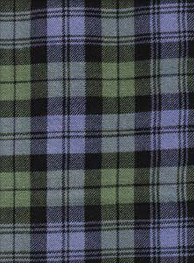
TARTANS are a widely recognised part of Scotland’s identity but their history and in particular the subject of clan tartans is a complicated one.
All that can be said with any certainty is that after the Union of 1707 tartan was consciously adopted as a Scottish icon and worn by men and women who spoke not a word of Gaelic and might have bristled at any suggestion of ‘Highlandness’. Indeed, it is obvious from a study of the paintings of the great portrait artist Alan Ramsay that he had a suit of coat and trews in red and black tartan which could be worn by his sitters, irrespective of family, to proclaim their nationality at a time when walking the streets in those same clothes would lay them open to arrest.
There is no doubt that the chequered patterns which we now call tartan go all the way back to the ancient Celts. One of the earliest references, for example, is by Diodorus Siculus in the first century BC, describing how the Gauls wore ‘striped mantles … covered with numerous small squares of many colours.’ Given this Gallic connection it is perhaps fitting that it should sometimes be argued that the term ‘tartan’ is of French origin and simply refers to a lightweight woollen cloth or tirtaine rather than to a patterned material. Certainly in Scottish Gaelic the term breacan was more generally used, which can be variously translated but most literally means multi-coloured. On the other hand, as early as 1538 the Lord High Treasurer’s accounts make reference to ‘Heland tertane to be hoiss’ (‘Highland tartan to be hose’) and in 1618 an English traveller named John Taylor noted that Highlanders at Braemar were wearing ‘a warm stuff of divers colours which they call tartane’.
Be that as it may, the term is now exclusively used to denote a cloth woven in stripes or bands of various widths and colours in a pattern or sett repeated at regular intervals with both the warp and the weft being the same. In other words the same sequence of colours is repeated vertically and horizontally from top to bottom and from side to side.
The complexities of these patterns can vary enormously. In 1581 the scholar George Buchannan simply noted that in the Western Highlands, ‘… their favourite colours are purple and blue. Their ancestors wore plaids of many colours, and numbers still maintain this custom but the majority now in their dress prefer a dark brown, imitating nearly the leaves of the heather, that when lying upon the heath in the day they may not be discovered by the appearance of their clothes.’

The Black Watch sett is at once the most iconic of the Scottish tartans, the oldest one in continuous use and the progenitor of many other setts.
The choice of colours was most likely dictated by the availability or otherwise of dyestuffs. Just as coats and breeches of hodden grey – actually a sandy brown colour – were commonly seen in Lowland Scotland, most plaids were probably the same. Nevertheless it is unlikely that Buchannan was speaking literally of plain brown garments, but ones relieved by lighter or darker bands and perhaps by occasional brightly coloured stripes.
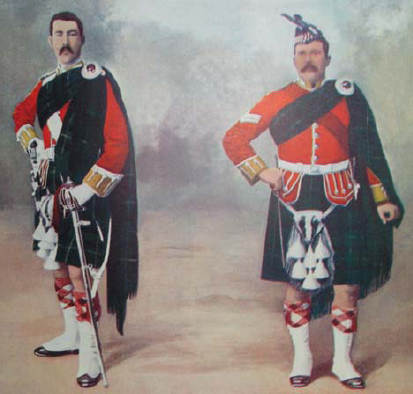
Another expatriate unit was the Capetown Highlanders of South Africa, photographed about 1900 in a hybrid uniform similar to that of the Argylls, combined with the tartan of the Gordon Highlanders.
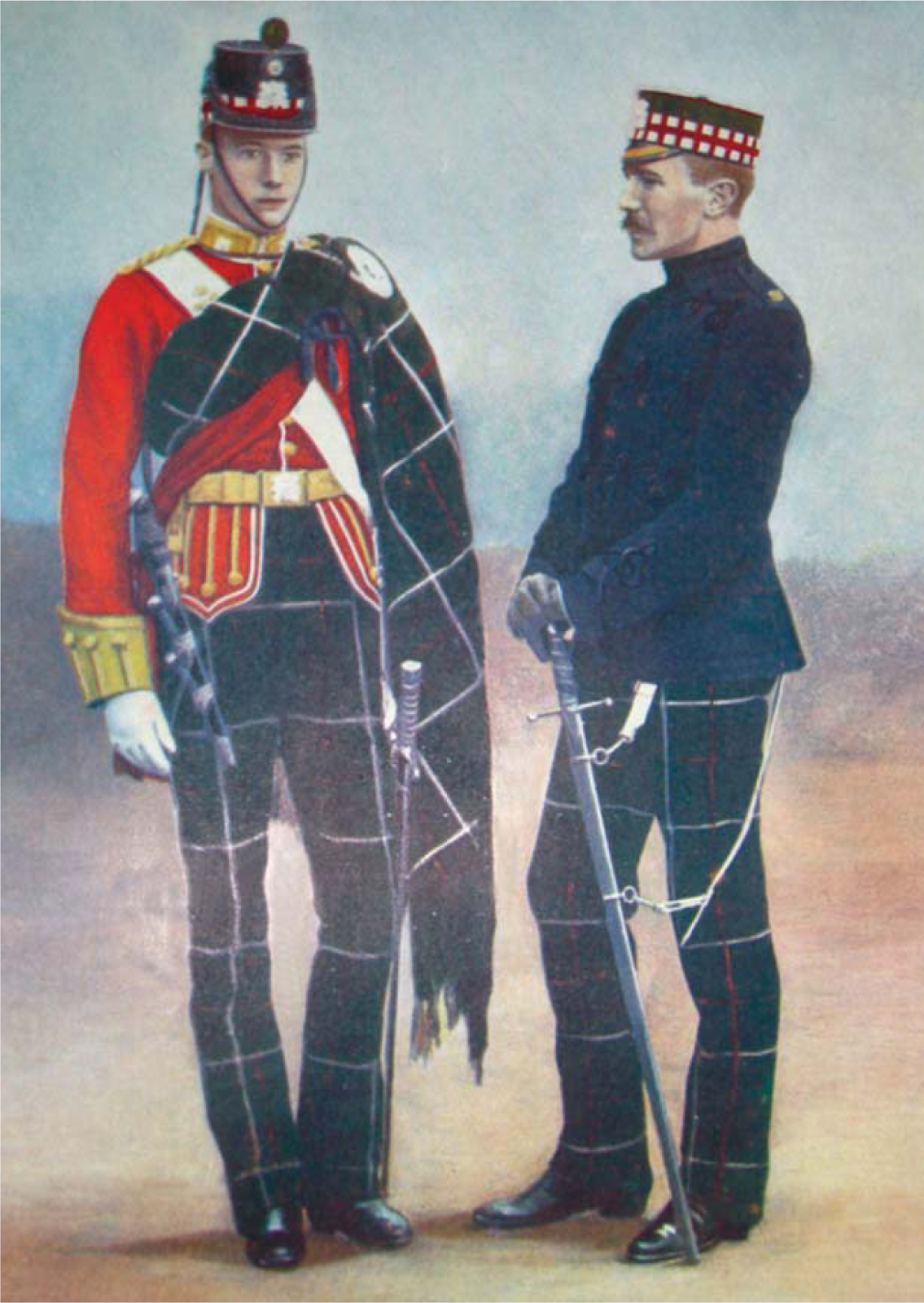
Both officers pictured in this 1900 photograph belong to the Highland Light Infantry.
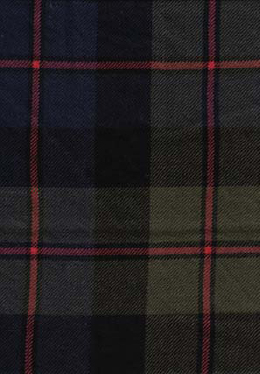
The 42nd Kilt pattern as recorded by William Wilson and Sons is surprisingly quite different from the classic Black Watch tartan.
A more useful description was given in 1703 by a man named Martin Martin, who as a native of Skye ought to have known what he was talking about.
The Plad wore only by the Men, is made of fine Wool, the Thread as fine as can be made of that kind; it consists of divers Colours, and there is a great deal of ingenuity requir’d in sorting the Colours, so as to be agreeable to the nicest Fancy. For this reason the Women are at great pains, first to give an exact Pattern of the Plade upon a piece of Wood, having the number of every thread of the stripe on it …. Every Isle differs from each other in their fancy of making Plaids, as to the Stripes in Breadth and Colours. This Humour is as different thro’ the main Land of the Highlands in so far that they who have seen those Places is able, at the first view of a Man’s Plaid, to guess the place of his Residence.
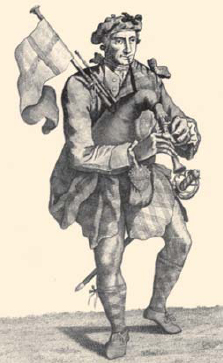
A well-known print of one of the Black Watch mutineers from 1743, displaying once again the characteristic gape of the plaid and the utility of the sporran.
Reliance upon these coloured pieces of wood or pattern sticks no doubt helps explain why certain setts came to be associated with particular islands or localities, just as knitting patterns or smocking patterns are traditional in others. Echoing Martin, it once used to be said that the particular village a Scottish fisherman came from could be identified by he patterns worked into his blue knitted gansey or jumper. Similarly, if a particular family or clan was strongly associated with a certain area or a particular island, there would also be a corresponding association with the tartan sett traditionally woven there.
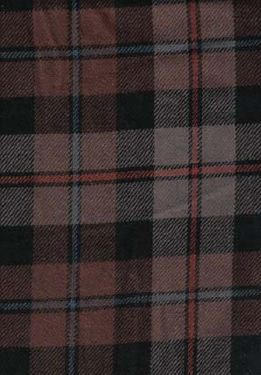
Campbell of Cawdor tartan is the 42nd Kilt pattern with a blue line substituted for one of the red. This is the ‘Hunting’ version in brown and grey.
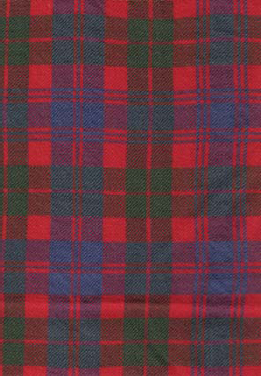
The original Black Watch ‘Music’ tartan was similar to that of the sergeants but with scarlet instead of black.
That did not of course amount to the establishment of ‘clan tartans’ as such, for a Campbell and a MacDonald living on say Eriskay might therefore wear identical plaids. However, one of the earliest hints that tartans had any particular significance beyond the local connections described by Martin, comes from a gentleman named James Philip of Almerieclose. In his account of the Jacobite clans gathered at Dalcomera in 1689, he tells us that MacDonald of Glengarry’s men were distinguished by plaids bearing a triple red stripe and that the followers of other chieftains were likewise variously identified by red or yellow stripes.
Almerieclose was a Scot from Arbroath and was therefore perfectly familiar with tartan, so the likeliest interpretation of his description is that as the personal followers of certain chiefs they were wearing otherwise nondescript plaids with a particular coloured overstripe or series of overstripes woven into the pattern, using yarn supplied for the purpose by their chief as a ‘household’ livery.
A useful parallel to this lies in various Highland regimental tartans. When the first Highland companies were embodied in the 1730s they were uniformly dressed in a dark blue, black and green sett, which survives today as the famous Black Watch tartan. In 1745, however, Lord John Murray became colonel of the regiment and in order to distinguish his men from more recent upstarts, such as the Earl of Loudoun’s short-lived 64th Highlanders, and the Argyle Militia, he introduced a single red overstripe to the familiar tartan. This survived as the regiment’s kilt tartan until the Napoleonic Wars but is now much better known as Murray of Atholl tartan. Similarly, the Duke of Gordon chose the army or Black Watch sett with a single yellow overstripe to be the uniform of his regiment. Ultimately, with the colours toned down it also became the tartan of his clan. The same was true of the MacKenzies who adopted for their clan tartan the army sett with red and white overstripes as worn by both the Highland Light Infantry and the Seaforths since they had originally been raised by MacKenzies.
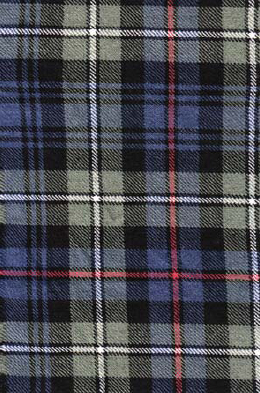
The MacKenzie tartan is based on the Black Watch sett but with red and white overstripes.
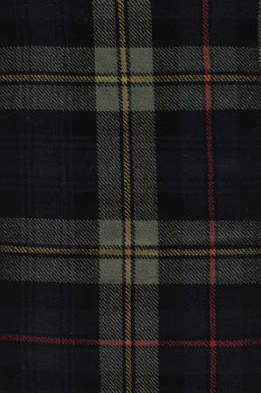
This Baillie tartan as originally worn by the Inverness Fencibles is simply the MacKenzie tartan with a yellow rather than a white stripe.
Whether the district tartans described by Martin allied to the coloured ‘livery’ overstripes described by Almerieclose and later used to vary the army sett amounted to the establishment of clan tartans before the nineteenth century is highly questionable. What a man wore in his own house was a matter for him and as the old restrictions were lifted there is ample evidence that gentlemen were adopting tartan setts which came to be peculiar to their own family. Just as a good set of tweeds might be handed down from father to son, so too were kilts and other tartan garments; if replacements were required then they would be woven from the same sett. Just as with Glengarry’s men at Dalcomera, the ghillies and other outdoor servants might also be dressed in the same or a very similar tartan, by way of livery. These were often recorded as such in weavers’ pattern books, so that this laird or that might conveniently order additional quantities of it from time to time. However, insofar as these were tartans chosen by individuals who were quite at liberty to take a fancy to something else entirely, they were still not ‘clan tartans’ as such.
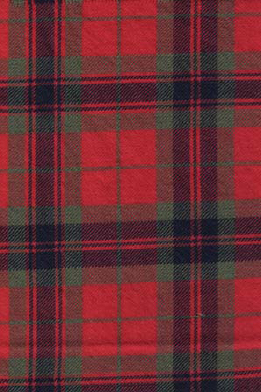
The red Fraser sett derives from a piece of tartan said to have been worn by a member of Simon Fraser’s Highlanders at Quebec in 1759.
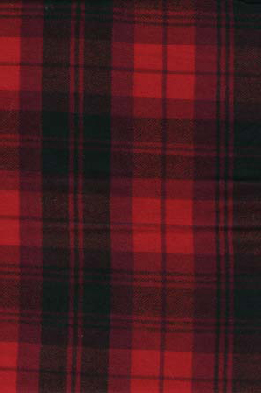
The McNab tartan displays the same arrangement of checks and stripes which make up the Black Watch sett, but with different colouring.
The catalyst in fixing those tartans came in 1822 with the visit of King George IV to Edinburgh and the encouragement given to his loyal subjects to turn out in Highland dress and tartans. Because a great many of those intending to do so had never actually worn Highland dress before they soon began enquiring what tartan they should properly wear. By and large what customers asked for they were given. There is a story, possibly apocryphal, that one day the great tartan weavers William Wilson and Sons of Bannockburn received an order from a particularly valued American customer for a very large quantity of Black Watch tartan and as an afterthought they were also asked for a rather smaller quantity of Brown Watch tartan! The tale then continues that once the laughter died down the manager solemnly declared that the customer is always right and would somebody kindly give the necessary instructions to the weavers. The story may well be true, for the present author himself wore a Brown Watch tartan kilt for many years, but the point is that if a clan tartan is wanted the customer shall have it – even if it needs to be invented.
The Hunting MacRae can be traced back to the Black Watch sett as it is essentially the Mackenzie tartan with the blue and green transposed.
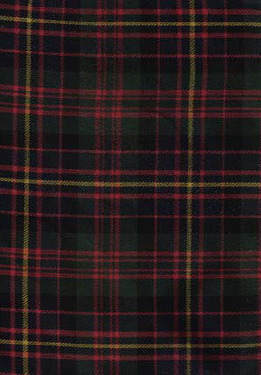
The Cameron of Erracht tartan bears no relationship to the Black Watch sett but was supposedly devised by Erracht’s mother, who was a MacDonald.
Clearly there was a crying need for guidance on this point. Ordering a quantity of say Grant tartan was obviously much more straightforward than deciding between an otherwise anonymous number 23 or an equally anonymous number 30 tartan. Guidance therefore came in the first instance from Logan’s Scottish Gael of 1831, which included a list of fifty-four clan tartans. It is sobering to note, however, that when Logan sought confirmation of their identity from William Wilsons he was dismayed to learn that many were simply known in the trade as ‘fancy’ tartans, and far from being genuinely associated with any clan or family most were just identified by number.
Nevertheless Logan was followed by two remarkable brothers calling themselves John and Charles Sobieski Stuart and claiming to be directly descended from Bonnie Prince Charlie himself. Whether they themselves believed this or not, they were genuine scholars and in 1842 published a remarkable book entitled Vestiarium Scoticum. This purported to be one of those old manuscripts proverbially found under the bed. In this case it was excitingly claimed to be a sixteenth-century document recording the tartans of the various clans. In reality it was a forgery and soon denounced as such, but together with McIan’s splendidly illustrated Clans of the Scottish Highlands published in the following year with text by Logan, it firmly established the popular notion that that there was – or at least should be – such a thing as a clan tartan.
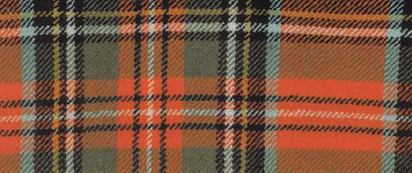
Another iconic Scottish tartan is what is now called Royal Stuart tartan, although at one time it was named Royal Bruce!
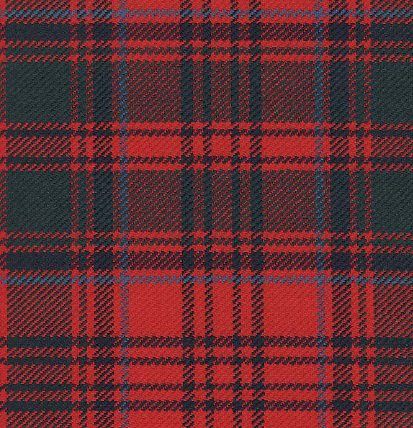
The red Grant tartan is itself unconnected with the Black Watch one, although that sett is worn as a Grant hunting tartan.